table of contents:
There's nothing more frustrating than seeing your efforts ruined by sewing machine loops that curl under the fabric or rebel on the surface? These imperfections, often the result of a conflict between the upper thread tension and that of the bobbin, distracted threading or a dull needle, turn the joy of creating into an obstacle course. If you're wondering why my sewing machine has loops , the answer is often hidden in these precise settings.
Learn how to decipher each symptom, adjust settings precisely on a piece of fabric and regain total control of your seams .
Why is your sewing machine looping?
Are you just starting to sew, but notice unsightly loops under the fabric? Don't worry, this problem is common and affects even experienced seamstresses. These loops indicate an imbalance between the upper thread and the bobbin thread, often linked to poorly adjusted tension, incorrect threading, or a lack of maintenance. With a few simple adjustments, you'll have clean seams in no time .
Loops aren't a mystery. In fact, they signal a conflict between two essential elements. If the upper thread is too loose, it accumulates in loops. If the bobbin is loosely tensioned, the lower thread dominates and creates visible bumps. Even a dirty bobbin case or damaged thread can cause this disorder.
A good stitch is recognized by a perfect balance, with the two threads crossing in the middle of the fabric without overlapping on either side. We'll help you identify the exact cause and fix it without stress.
We'll first explore how to analyze loops to understand their origin. Then, you'll learn how to check upper and bobbin thread tension, resume threading step by step, and clean critical areas of the machine.
Simple tricks, such as observing the direction of the loops (under or over the fabric), will help you accurately diagnose the problem. Say goodbye to uneven seams and turn your mistakes into successes!

Diagnose the problem: Are the loops on top or underneath the fabric?
Loops in your seams indicate a tension imbalance in the machine . Start by observing whether these loops appear under or on top of the fabric. This analysis directly targets the source of the problem.
Loops under the fabric indicate a loose upper thread. This is caused by insufficient tension or incorrect threading. A common oversight is when the thread is not passed through the needle bar thread guide. Check each step of the threading process to identify the error.
Conversely, loops on the top of the fabric indicate a loose bobbin thread . The upper thread tension may be too tight, or the bobbin thread tension may be too tight. A common occurrence is a bobbin thread wound by hand instead of the bobbin winder, which creates uneven tension.
To validate your adjustments, always test on a piece of fabric identical to your project . This isolates the parameters responsible for the problem, since the thickness of the fabric influences the ideal tension.
|
Rapid diagnostic chart for curls |
|||
|
Visual symptom (Where are the loops?) |
Source of the problem |
Most likely cause |
First action to check |
|
Loose loops and knots visible under the fabric |
Upper thread |
Upper thread tension too low or incorrect threading |
Check that the upper thread is fully threaded and increase its tension. |
|
Loose loops and knots visible on top of fabric |
Bobbin thread |
Upper thread tension too tight or bobbin tension too loose |
Decrease upper thread tension or check bobbin tension/installation. |
Regular cleaning of the tension discs and bobbin case prevents uneven tension. If you have any lingering doubts, a professional overhaul remains a reliable solution .
Want to sew your own clothes? Sign up for Verotex's training courses to master your sewing machine in no time.
The #1 cause of curls: incorrect tension setting
When a sewing machine produces loops under the fabric, the problem often stems from an imbalance between the tension of the upper thread and the bobbin thread. The perfect stitch intertwines within the layers, invisible on the front or back. An improper setting disrupts this balance and creates unsightly loops.
How to adjust the upper thread tension?
The tension dial, usually numbered, allows you to tighten (high number) or loosen (low number) the upper thread . Start with the standard value (often 4 or 5). For heavy fabrics (canvas), a slightly higher tension (6-7) may be necessary.
For fine fabrics (silk), choose 3-4. If loops appear under the fabric, gradually increase the tension (5 → 6) and test with each change.
The yo-yo test to check the can
Adjusting the bobbin thread tension is less common. For removable bobbin cases, perform the yo-yo test: hang the bobbin by its thread and give it a shake. If it drops slightly, the tension is correct.
If it falls, tighten the screw (clockwise). If it stays still, loosen it (counterclockwise). For horizontal cans, check their positioning: a poorly inserted can creates loops.
Here's how to do it:
- Prepare a swatch with the project fabric and threads.
- Set the upper voltage to 4 or 5 (standard value).
- Sew a straight line a few centimeters long.
- Look at both sides : locate the loops on top or underneath.
- Adjust the tension : increase (5 → 6) if the loops are under the fabric.
- Decrease (5 → 3) if curls appear on top.
- Repeat until you have an invisible, balanced stitch .
When and how to adjust the tension?
Test on a swatch, especially for unusual fabrics. Electronic machines sometimes have an "auto" mode, but manual adjustment may still be necessary. Clean the tension discs and bobbin case regularly, as dust interferes with the thread path.
Check the needle, as a blunt or incorrectly inserted needle may disrupt tension. If in doubt, rethread the machine before adjusting the bobbin, as incorrect threading is often the main cause of loops .
Go from beginner to expert. Our courses at Verotex will guide you through using your sewing machine like never before.

Beyond Tension: Other Common Causes of Curls
You've checked your thread tension, but the loops persist? There are other things you need to consider. Discover the common mistakes that turn your project into a tangle-free world .
Incorrect threading of the upper thread
Most threading problems stem from a forgotten step: the presser foot must be raised during threading . This releases the tension discs, allowing the thread to position itself correctly. Forgetting this step is like trying to thread a necklace through a ring without opening the clasp!
Always check that the thread is passing through all guides, including the thread lift lever. Missed threading creates uneven friction, which can lead to loops . Need a guide? Check the threading diagram in your machine's manual.
Can Problems
An improperly inserted bobbin reverses the laws of sewing. The thread must wind in the correct direction (usually counterclockwise for horizontal bobbins). A poorly wound bobbin, with a loose or offset thread, releases its thread in an anarchic manner .
Inspect your bobbin, as scratches, warping, or misdirected threads can all be enough to disrupt the stitch. If the bobbin case is damaged, even slightly, replace it. A bobbin case that doesn't fit your machine is like a bad dance partner that always ends up tripping you up .
The unsuitable needle and thread duo
A thick thread with a thin needle is a recipe for excessive tension. Conversely, a thin thread in a large needle sails without precise guidance. The needle size must match the thread diameter , like a lock to its key.
A dull or bent needle makes the problem worse because it forces the thread to twist or break. Change the needle as soon as you feel it snag while stitching.
Ask yourself these questions to see if the needle and thread duo is working well:
- Is the presser foot raised correctly when threading?
- Is the upper thread passing through ALL guides, including the take-up lever ?
- Is the can inserted in the correct direction of rotation ?
- Is the bobbin thread wound smoothly and evenly ?
- Is the needle suitable for the fabric AND the thread ? Is it in good condition?
By adjusting these settings, you eliminate 90% of mysterious loops. Once you've mastered these steps, even the most unpredictable fabrics will hold no secrets for you .
The influence of the fabric and the specificities of your machine
Wondering why my sewing machine is looping even though you're following all the steps correctly? Often, the answer lies in the choice of fabric and the correct settings for your machine. Between the influence of the presser foot, the sewing technique used, and the differences between mechanical and electronic models, every detail can transform your sewing experience from success to frustration.
The impact of fabric type
The type of fabric directly influences the appearance of loops. Fine or slippery fabrics like silk require a Microtex needle and reduced tension to avoid uneven stitches. Choose a fine polyester thread (50/2) for these delicate fabrics, as its flexibility reduces friction.
For thick fabrics (denim, faux leather), use a heavy-duty needle (90/14 or 100/16 ) and a thicker thread (60/2 or 40/2) and slightly increase the upper thread tension (around 4.5-5 on a scale of 1 to 9) to compensate for the thickness. A presser foot for thick fabrics makes it easier to advance without distorting the fabric.
Stretch fabrics (jersey) stretch during sewing. Use a stretch or ballpoint needle (70/10 or 90/14) and a stretch stitch (light zigzag or overlock) to prevent the stitch from breaking. Reduce the pressure on the presser foot to avoid crushing the fabric, especially with models with manual adjustment.
At Verotex you will find all the types of fabrics you need.
The role of the presser foot and technique
The standard presser foot isn't always optimal. Dual-feed feet (like the walking foot) are better for thick fabrics , while Teflon-coated feet glide smoothly over synthetic materials. Variable-opening feet accommodate changing thicknesses, such as topstitching.
Avoid forcing the fabric and let the machine handle the feed, as rough handling disrupts thread tension. Stabilize slippery fabrics with double-sided tape or a layer of tulle before sewing. For thick fabrics, slightly loosen the edge of the presser foot to ease the passage of layers.
The differences between mechanical and electronic machines
Mechanical machines require preliminary testing on a piece of fabric. A repetitive loop often indicates incomplete threading or clogging. Clean the bobbin case regularly with a soft-bristled brush to prevent lint buildup.
Electronic models sometimes have automatic tension sensors. If loops occur, check that the optical sensor is not clogged with debris. Some models display error codes (e.g., "thread error") indicating a threading problem . Use the "automatic cleaning" option if available, following the instructions in the manual.
Regardless of the type of machine, regular cleaning of the thread guides and bobbin case remains essential. Lint buildup systematically disrupts the thread tension . Release the upper thread tension at the end of sewing to prevent thread slippage.

Preventing the appearance of curls: good maintenance habits
Loops under the fabric are often preventable. A well-maintained sewing machine reduces these errors. Did you know that lint or a worn needle can cause problems? Here are some simple steps to avoid these problems :
Regular cleaning is essential
Thread residue and lint accumulate in the bobbin and under the needle plate. After each project, dust these areas with the provided brush and don't forget the feed dogs, as they affect stitch quality .
Replacing the needle
A dull needle will affect tension. Change it every 8 to 10 hours of sewing. Check that it is positioned correctly: it should be straight and securely engaged. A new needle will prevent slippage on all fabrics.
Lubrication
Oil only moving metal parts, such as the needle shaft, and consult your manual for specific stitches. Use 1 to 2 drops of specific oil, avoiding excess. Light lubrication improves the glide of the lower thread .
Your care routine for worry-free sewing :
- Dust the can after each project.
- Change the needle before a new garment or after 8 hours of use.
- Use good quality threads without excess lint .
- Test on a sample before final sewing.
- Store the machine away from dust with its cover.
By following these steps, you will reduce the risk of loops and extend the life of your machine. Adopt these simple steps for clean stitches every time .
Sewing machine loops are a common problem, but easy to fix with the right steps. By adjusting the tension, checking the threading and bobbin, and matching your material to the fabric, you will achieve a clean seam . A well-maintained machine and prior testing guarantee perfect results .

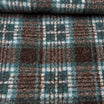
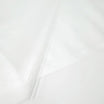
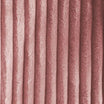


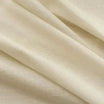
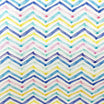




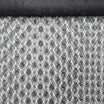








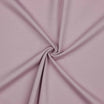

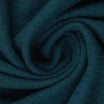
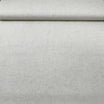
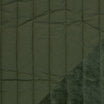
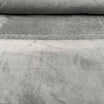








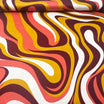



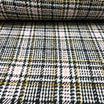
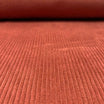


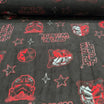



Leave a comment
All comments are moderated before being published.
This site is protected by hCaptcha and the hCaptcha Privacy Policy and Terms of Service apply.